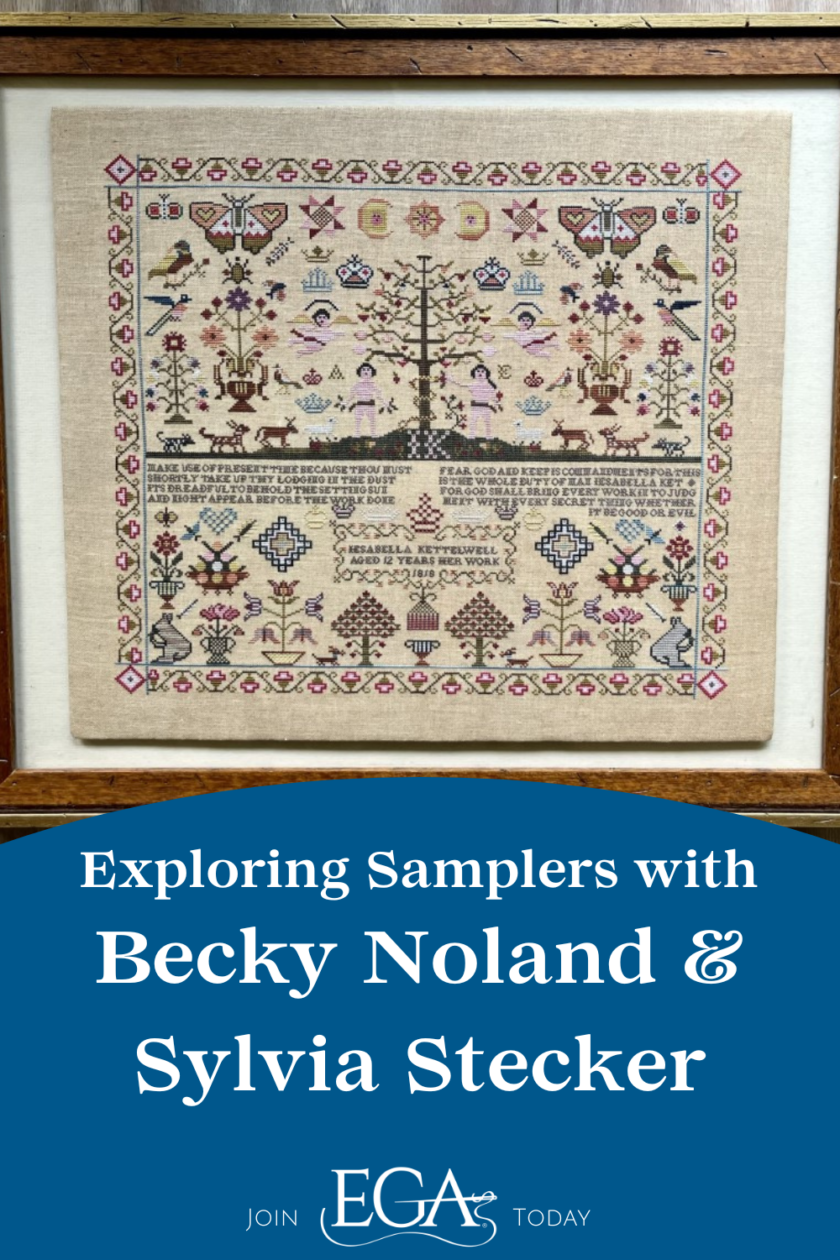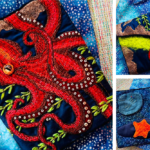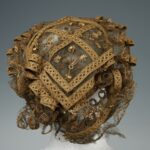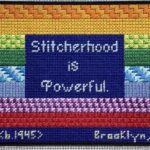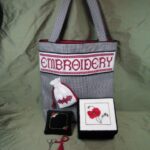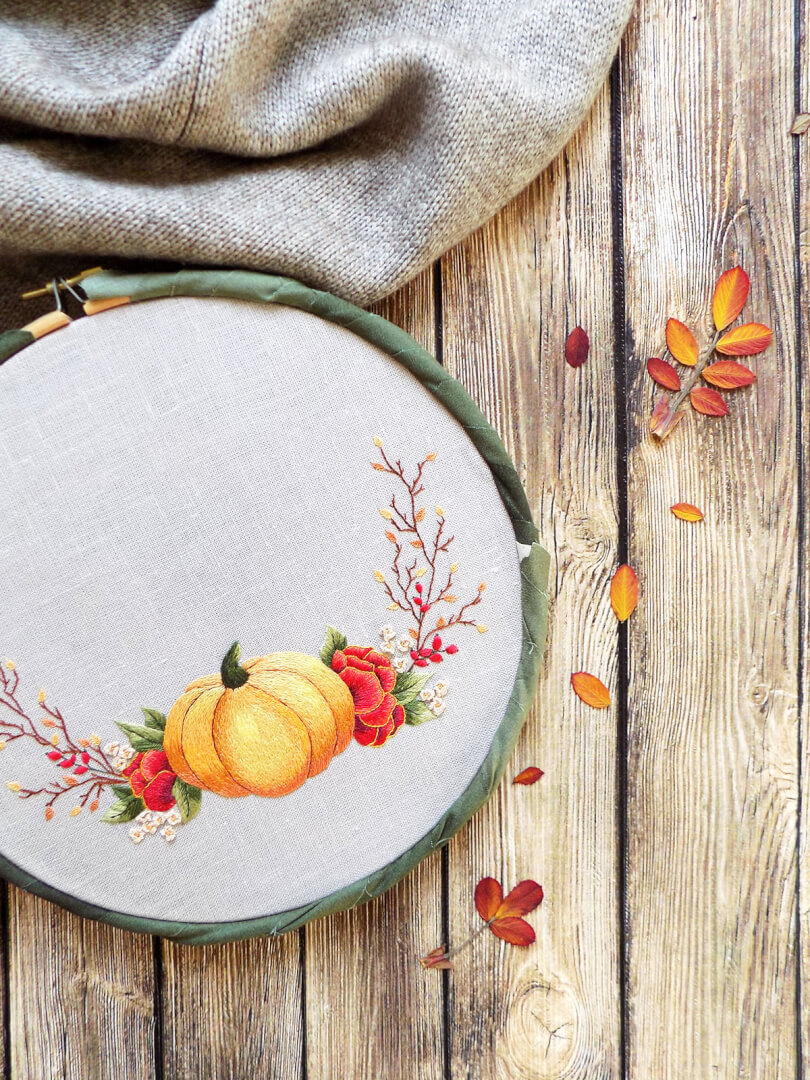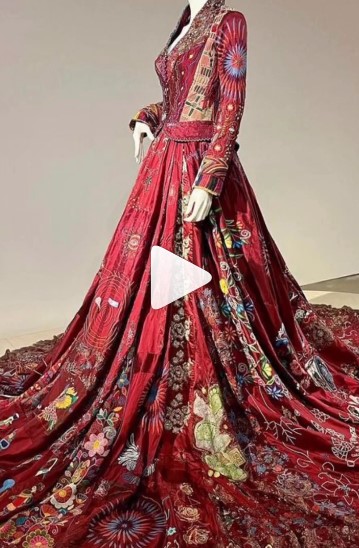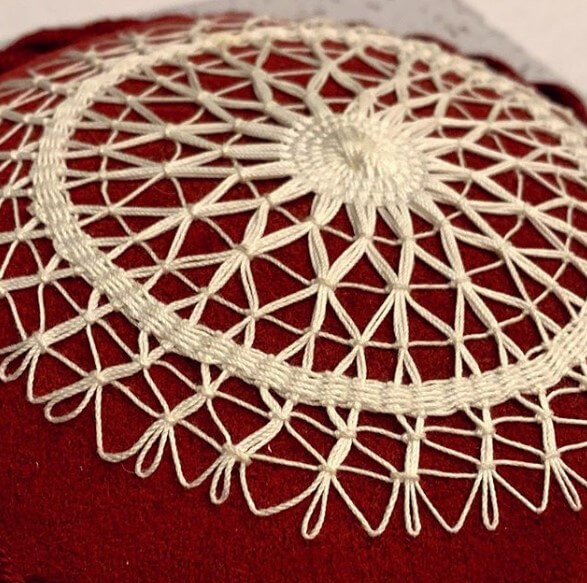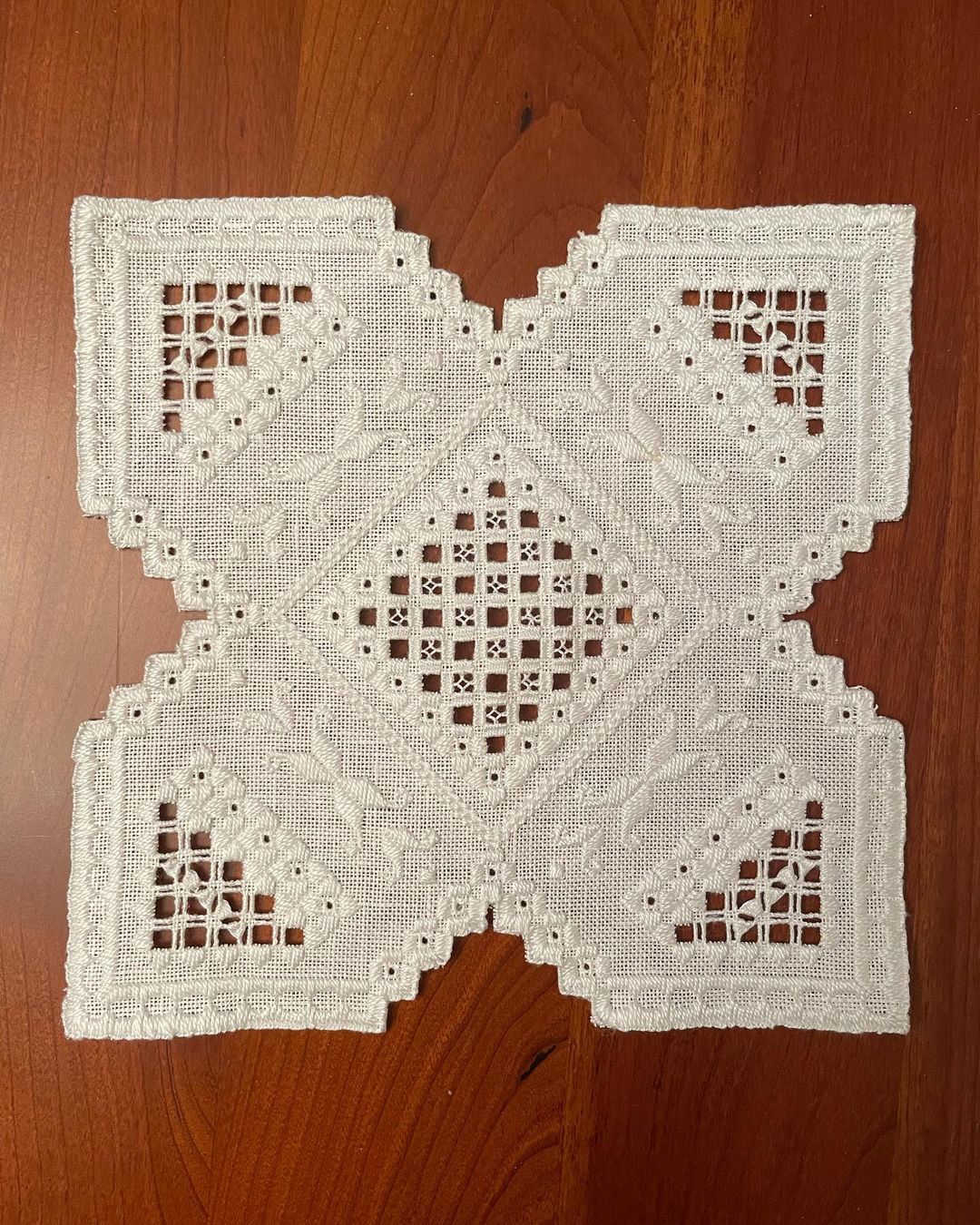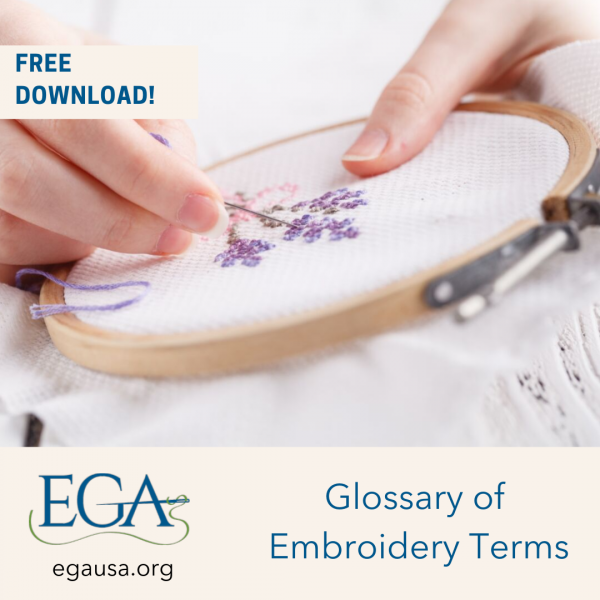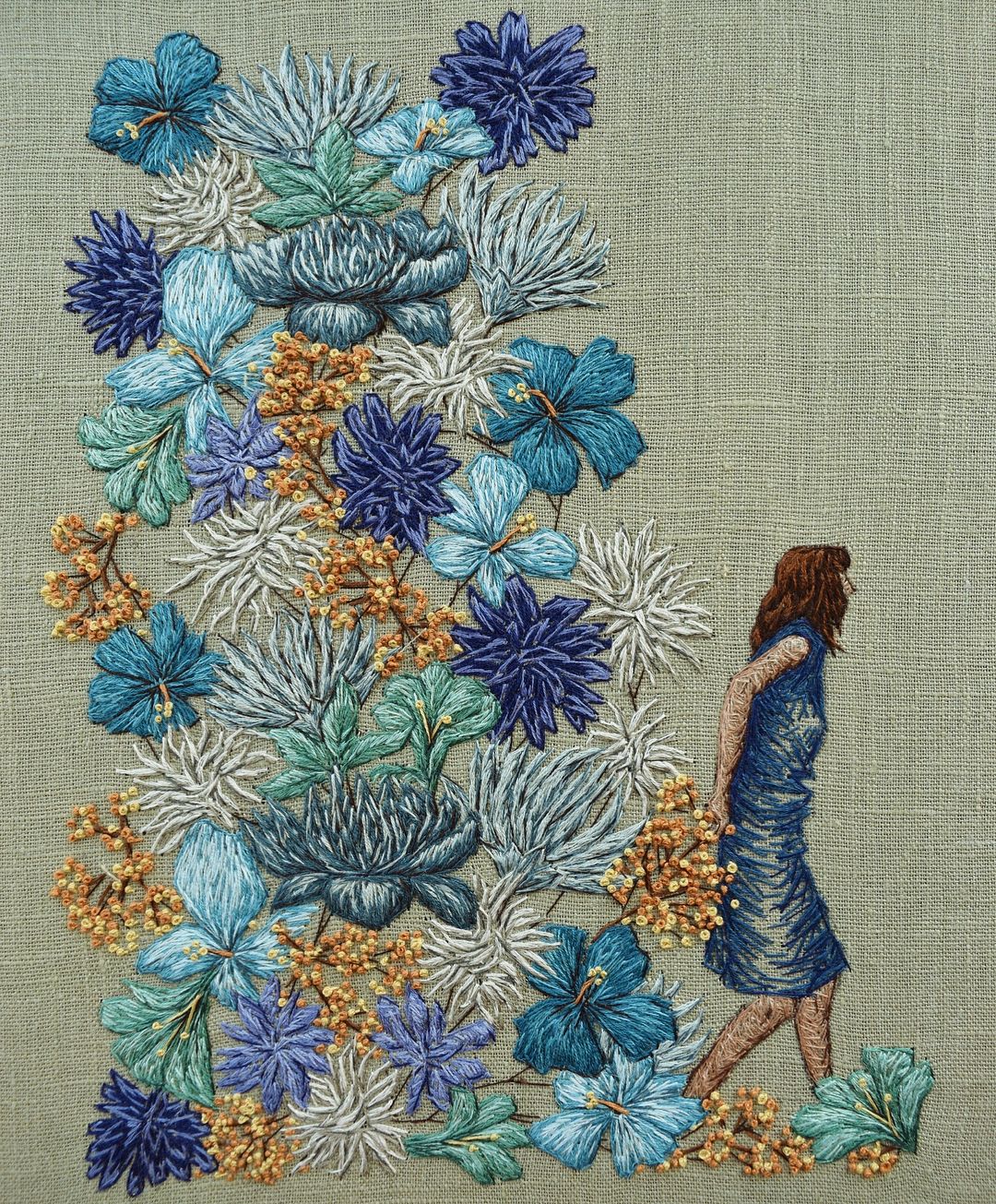
EGA was excited to learn more about the beauty of samplers with Becky Noland and Sylvia Stecker, the two teachers leading Sampler University at National Seminar 2025: Needlework Faire in Dallas. Both Becky and Sylvia have immersed themselves in the world of samplers for some time, drawing inspiration from generations of stitched samplers and developing a deep appreciation for the hard work of young women who are otherwise often forgotten.
Where did your love for samplers begin?
Becky Noland: When I first started cross stitching in high school I found a sampler leaflet by Leisure Arts and was entranced by the simplicity and primitive nature of the samplers. This started a lifelong love of samplers and school girl samplers in particular. I started to purchase samplers for my personal collection and eventually began to reproduce them after I became a designer. They are still my favorite thing to stitch.
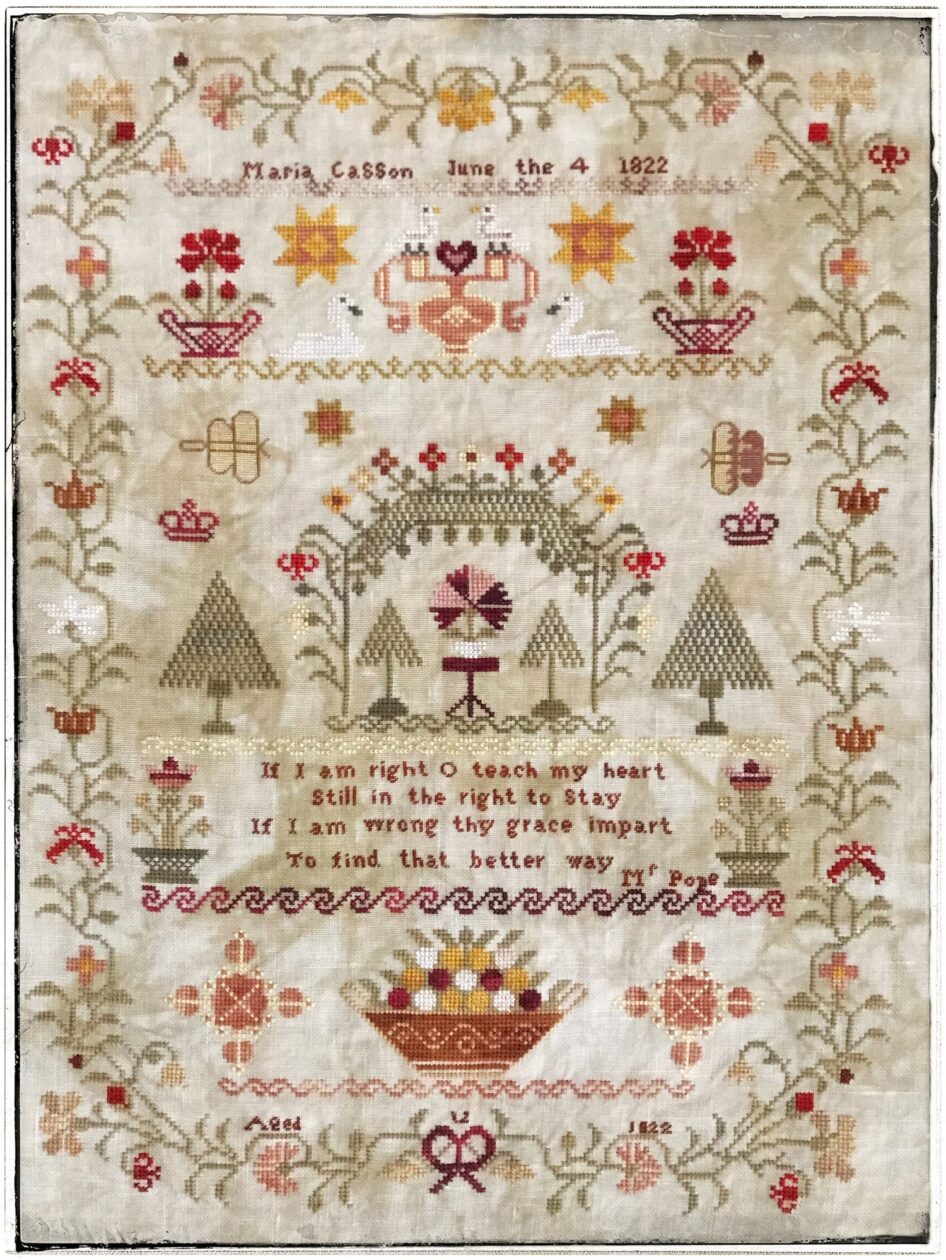
Sylvia Stecker: I think it was a gradual thing. In 2006, I joined the Tudor Rose Sampler Guild here in the metroplex, where I was introduced to reproduction samplers. Prior to that, I am not aware that I considered stitching them—or collecting those patterns. I don’t think it was instant love, but it was a rapid courtship for sure. Being part of a Guild does further the love of samplers, although that is selling guilds a bit short since many members stitch a wide variety of things.
The first thing I stitched has long since landed in the trash because I was never going to finish it. It was a wedding sampler for my lifelong friend and was a Janalynn kit. I think I petered out about halfway. I have included a photo of the second thing I stitched and finished. It is a design by La D Da (one of my favorite designers to this day) and is called Friends Forever. I made a counting mistake on the polka-dotted dress and it got a bit bigger than charted. It is also the first thing I framed myself and it’s a bit wonky. That is ok, I keep it that way to remind me how much my skills have improved. One of my most favorite samplers is And They Sinned by Examplar Dames. While not a reproduction sampler, it is an iconic sampler. One of the first reproductions I finished was Mary Roe 1808 by The Scarlett House.
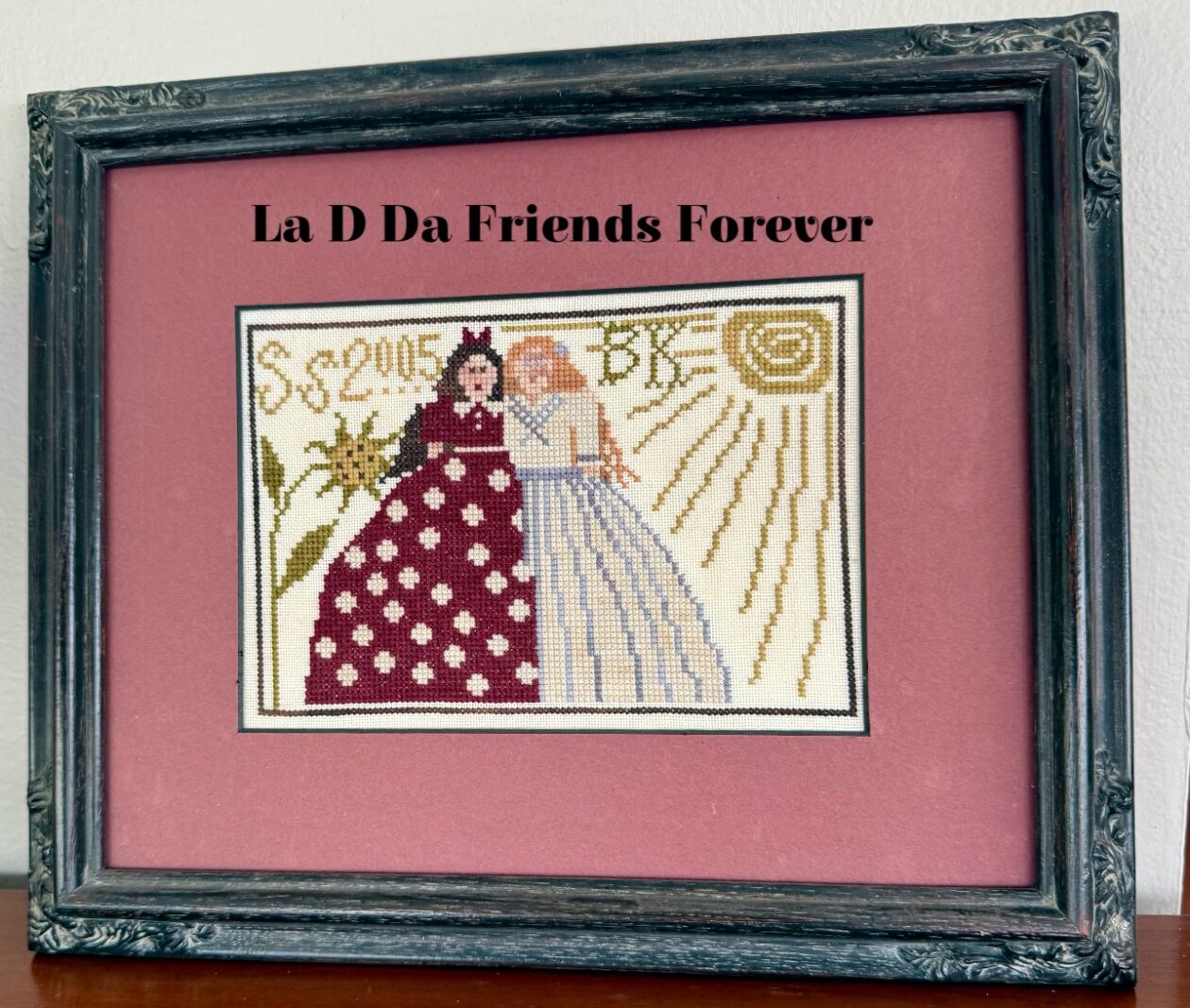
I started my reproduction career where many fledgling reproductionists start, with a schoolgirl sampler, in my case a monochromatic red sampler called A Spanish Red – Martha Marsiarles. I stitched the sampler directly from the antique BEFORE I charted it. Then I forgot to note the color of the silk, and the linen I used was no longer available. Aaargh!! A friend restitched it for me on readily available linen with a duly noted color of red silk. All this to say, we all start somewhere, and it’s a learning curve.

Why do you love samplers?
BN: I am most intrigued by the samplers stitched by children. I love the fact it was designed by a seven-year-old child, let’s say, in the 1700s. The composition and color choices made by a child in a room lit by only a candle with a limited choice of fibers to choose from is amazing and humbling. The utilitarian use of samplers to teach the children their letters and numbers as well as how to stitch is so wonderful to me.
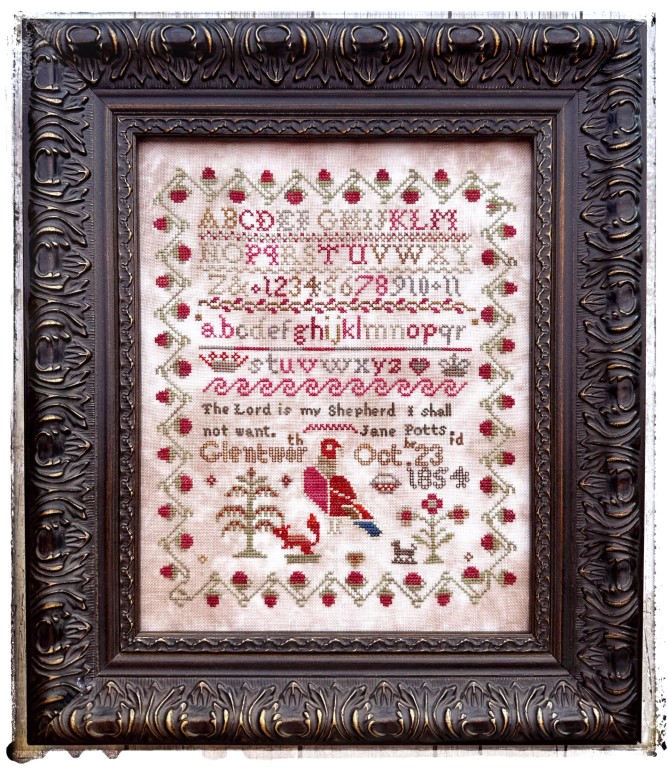
SS: To me, samplers are the ultimate female legacy. Each sampler in some way testifies about its creator, who was living in a time where she was publicly voiceless and later often forgotten. Samplers call out from the past to remind us that often this was one of the few items girls could put their name on, whether they did so elaborately and carefully, or with haste and relief. I love the infinite variety of samplers. I love the girl’s artistic efforts and the disproportion often
displayed on samplers. I love the preservation of colors as well as the predominantly faded fronts of samplers. I love the surprises a sampler holds when you start the work of reproducing it. I love the spelling mistakes and the miscalculation of space forcing the stitcher to improvise. The skills of these young stitchers never cease to amaze me.
How did you decide on your class for Sampler U at EGA National Seminar 2025: Needlework Faire?
BN: I love to make things that are practical as well as beautiful, so I settled on a sewing roll for the project. I wanted to do a different take on the alphabet and decided to stitch the alphabet in Smyrna Stitch instead of the more popular Algerian Eyelet Stitch. Smyrna is a fun stitch and one of my favorites. The bottom motifs are from various samplers I have bought from England.
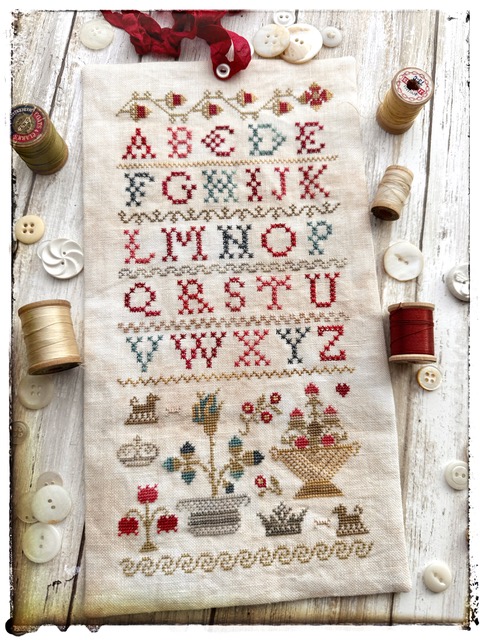
SS: Several days before Lea reached out to me, I was studying some of the samplers on my walls. When she called and asked me if I would be interested in teaching at Sampler U, and I recovered from my shock, I already knew which sampler I wanted to reproduce and what the content of my class would be. The sampler turned out even prettier than I could imagine, and I am so thrilled to be able to teach Iesabella Kettlewell at the inaugural Sampler U. She has so
many fun motifs that I found the idea of creating smalls from the sampler intriguing. There is such talent in the stitching community, and I cannot wait to see what participants in this class will come up with.
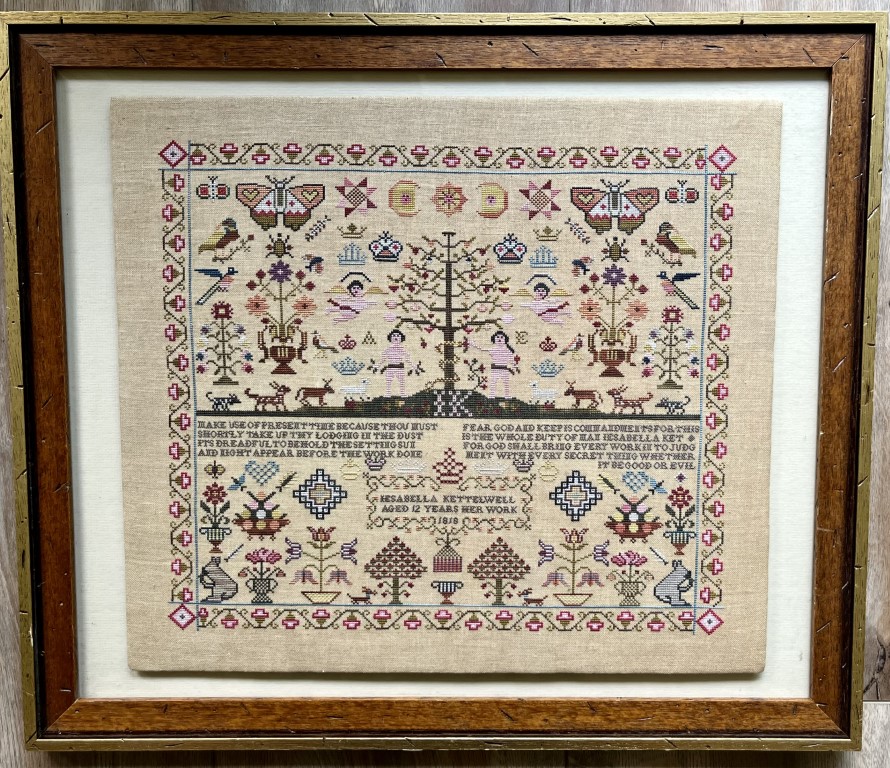
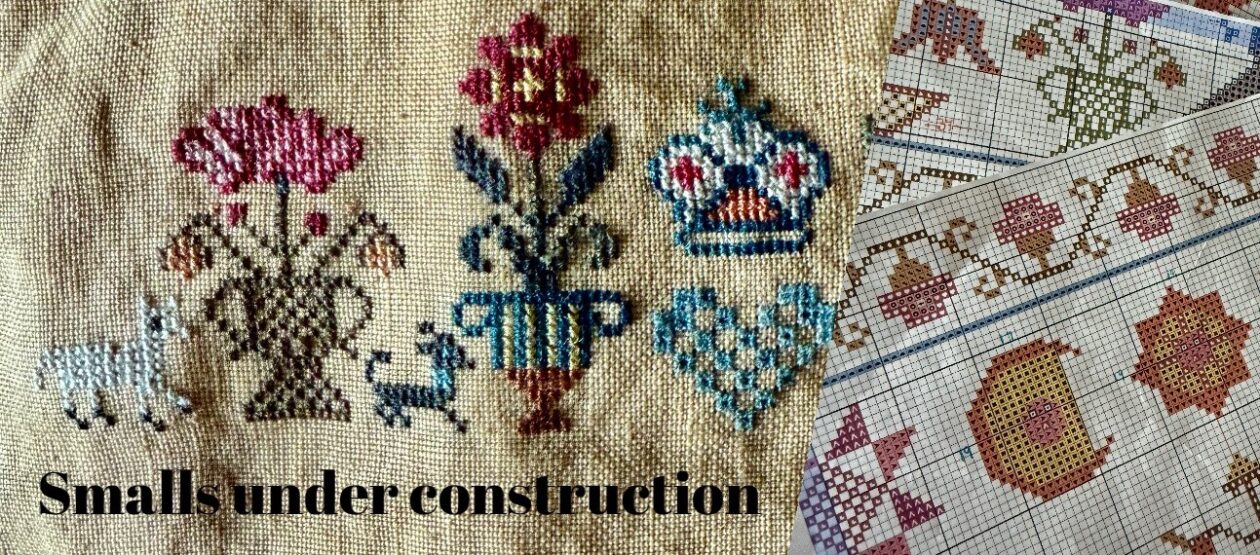
What should interested stitchers know about your Sampler U class before signing up?
BN: The only specialty stitch in the project is the Smyrna Stitch which all the alphabet letters are stitched in. The rest of the sampler is stitched in cross stitch.
SS: Isabella Kettlewell is a substantial sampler, and what makes it substantial is not only its size, but also the density of motifs. This is what makes the result so beautiful. The creative part of the sampler is going to be fun, and should not intimidate anyone, as creating smalls is a fun process and not difficult at all. My aim for the class is not only to be informative but also fun with plenty of time to stitch and design, and chat of course.
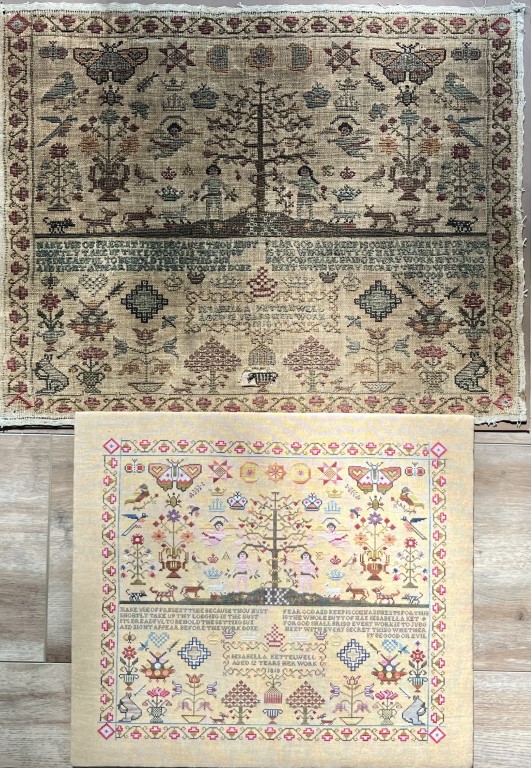
We’ve seen interesting contemporary iterations of samplers that move beyond the standard and familiar sampler templates (the July 2020 EGA Stitch-a-Long for Hearts for Hospice comes to mind). Do you have any favorite modern samplers?
BN: Stacy Nash is my favorite modern samplers designer. Her samplers look old even though they are new and that is what draws me to them.
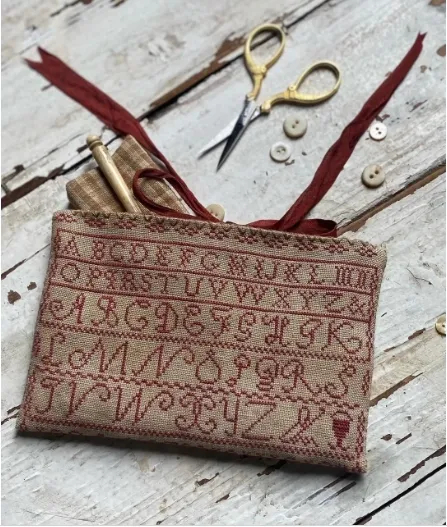
SS: This is difficult to answer, as the interpretation of the term modern is subjective. In my view, any original sampler that Jeanette Douglas has designed is a modern take, with a number of specialty stitches. Also, Kimberly Nugent of Samplers Not Forgotten has some band samplers combined with floral motifs that I would consider modern although they look quite antique. But here I am talking more about samplers in the traditional format. A non-traditional sampler could for example take the shape of Janine McGowan of The Blue Flower Stitching – Bees in the Greenhouse. Although Janine’s design is pictorial, it has a unique shape and I could see a more traditional sampler design done this way.
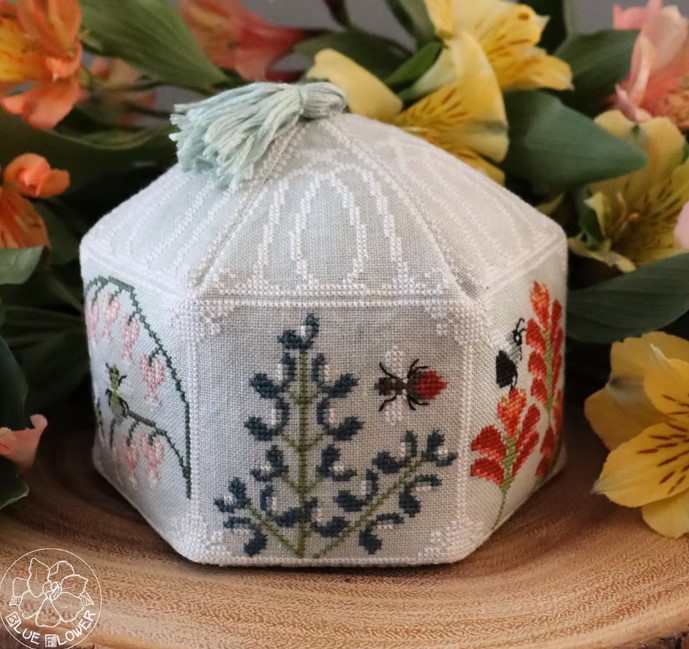
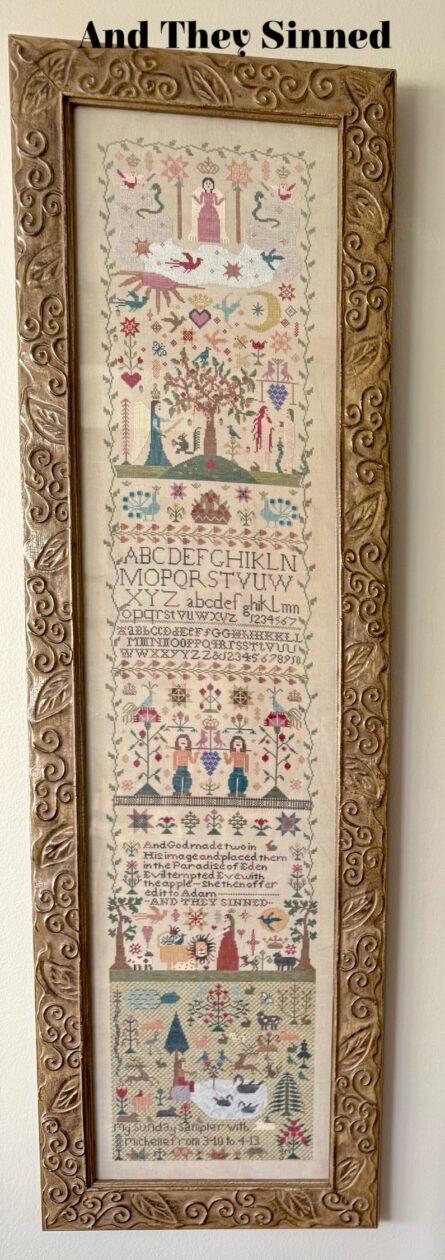
Do you have any indispensable tools or resources that will help stitchers become sampler experts?
BN: A good place to start would be to find a sampler design that captures your imagination and start stitching it! I have learned so much from reproducing and stitching samplers. Find a few sampler history books and read up on the history of different samplers in various regions and the schools that they came from. A great article on the history of samplers can be found at The Victoria and Albert Museum.
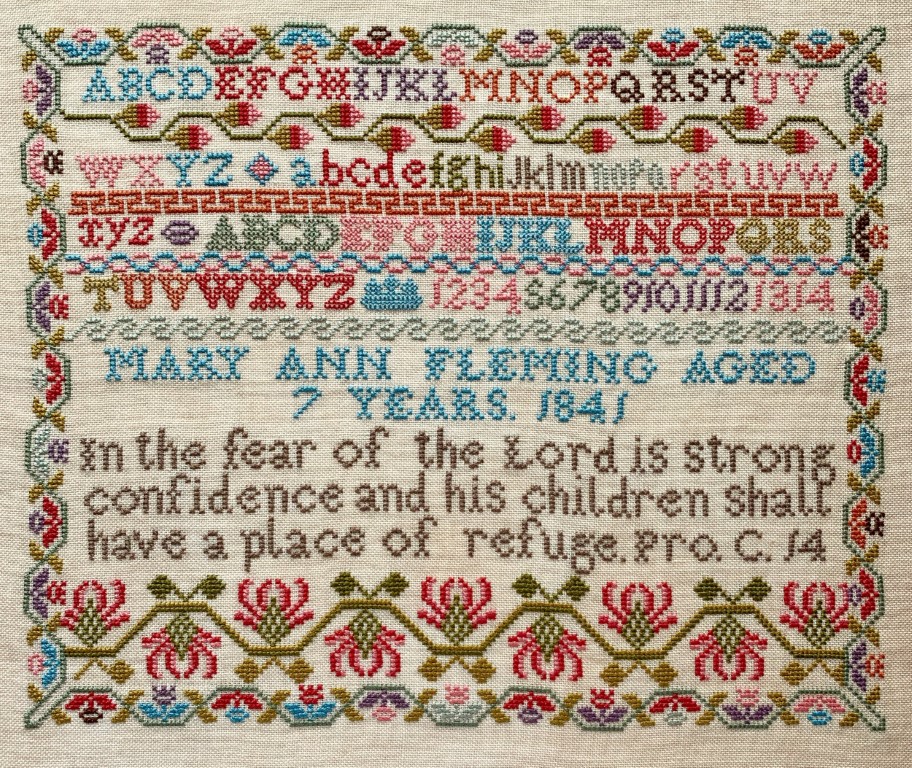
SS: I do not consider myself an expert in samplers, but what I have learned has been mostly through the purchasing and reproduction of samplers. I think in terms of purchasing samplers, go by your gut and what appeals to you, but always google the maker and year to make sure you are not buying a reproduction. While I have not done that, I have come close, and one time I did buy a print. There are really good prints out there. There are a lot of reference books regarding samplers, and they do help in expanding your knowledge; however, I do think those fall more into the “nice to have” category. Expertise grows with exposure to the subject, in terms of stitching, attending seminars, looking at antiques, and researching the lives of the makers. I personally do not see samplers as an academic subject and most certainly I am not a purist. The acquisition and reproduction of samplers is one of joy, color, whimsy, and discovery with a bit of skill thrown in.
Do you have any advice for stitchers interested in developing their own sampler designs?
BN: Find an alphabet book and start charting your own samplers with your favorite motifs in them! You will learn all kinds of unusual stitches when stitching reproductions or newer sampler designs. Have fun incorporating the new stitches into your own design and remember you can use the specialty stitches instead of cross stitch in a lot of cases.

SS: The best advice is to just do it! Do not overthink and do not get discouraged. Designing is a skill that grows with use. Buy yourself a charting software; I use WinStitch because that was the one I could figure out instinctively. Both WinStitch (Mac) and PC stitch have trial versions, and I recommend trying both before purchasing. Both softwares are reasonably priced.
The book Ultimate Sampler Motifs Source Book by Brenda Keys is invaluable as a starting point. Oftentimes, when I am looking for a motif, I leaf through the book. I tend to alter whatever motif I pick to my liking, but it is a great way to get started. Samplers are full of letters, be it alphabets or verses, so a good book of alphabets is a must. The one I use the most is minuscules & MAJUSCULES by Valerie LeJeune. Any book by Valerie Lejeune is going to serve you well. I would say there are no rules regarding samplers. They do not have to have a verse or alphabet, they can be pictorial, they can also just consist of letters. They can have plain, fancy, or no borders. As I have said, just do it, and keep at it.
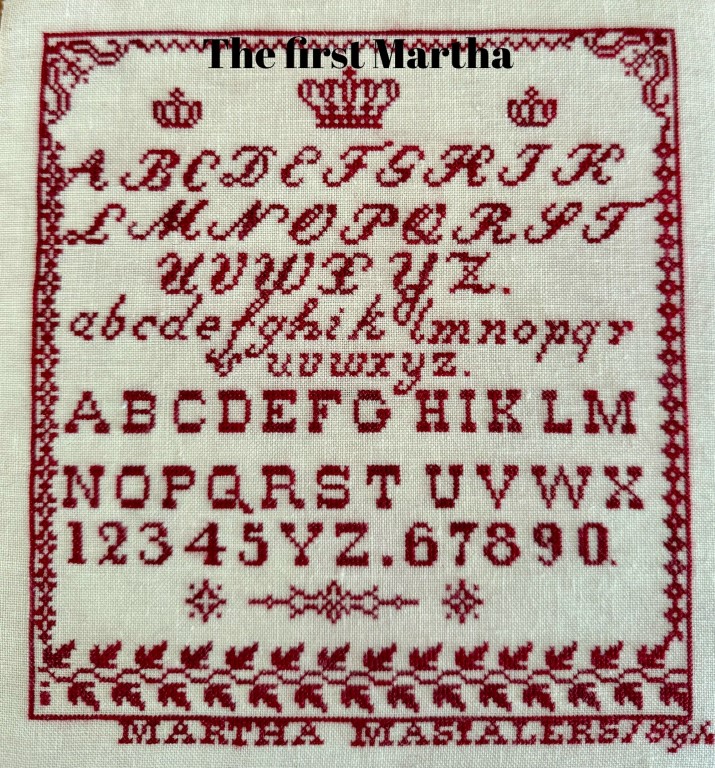
Where can interested stitchers learn more about you and your work with samplers?
BN: www.lucybeam.com, @lucybeamthreads on Instagram, and Friends of Lucy Beam on Facebook.
SS: I would love for you to follow me. My website is www.RWNAS.com, where you can sign up for a newsletter. In addition, I have an Instagram Account, @running_w_needles_and_scissors, and YouTube channel, Running With Needles & Scissors – Sylvia S. I do have a Facebook account, but it just posts what I post on Instagram.
